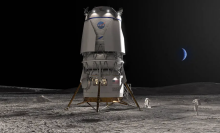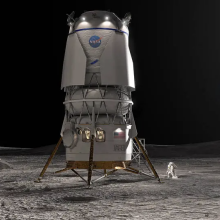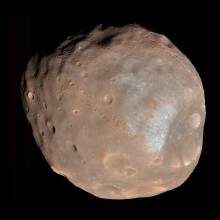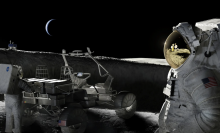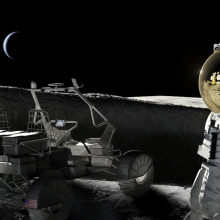NASA astronauts will venture to the coldest realms of the moon — the dark craters of the lunar south pole.
"Some deep craters haven’t seen the light of day for billions of years, so temperatures there can dip to minus 334 Fahrenheit," the space agency said. "That’s nearly three times colder than the lowest temperature recorded in Antarctica."
They'll have new moon suits — a significant upgrade from the Apollo suits of over a half-century ago — to insulate them from these extremes. The suits have just been unveiled by their makers, Axiom Space and the luxury designer Prada, revealing a high-tech lunar uniform.
"Pleased to apply my expertise of being in space to the testing and design process of Prada!" Peggy Whitson, a former NASA astronaut (who spent 675 days in space), posted online.
The suits were revealed at the International Astronautical Congress in Milan, Italy, on Oct. 16.
Called the "Axiom Extravehicular Mobility Unit (AxEMU)" spacesuit, astronauts will first don them during NASA's Artemis III mission, which is currently slated for September 2026. These astronauts will spend about a week exploring and collecting samples in the freezing south pole craters because of the invaluable resource preserved there: frozen water. The space agency recently detected this ice in extremely frigid craters just beyond the south pole region, too.
"New findings from NASA’s Lunar Reconnaissance Orbiter reveal that lunar ice deposits are more widespread than we thought, even beyond the south pole’s shadowed regions!" Nicky Fox, who heads NASA's Science Mission Directorate, posted online. "These icy deposits could contain vital resources for future explorers, including water for radiation protection, air, energy, and even rocket fuel!"
"These icy deposits could contain vital resources for future explorers, including water for radiation protection, air, energy, and even rocket fuel!"
The suits, shown below, will allow astronauts to "endure the coldest temperatures in the permanently shadowed regions for at least two hours," Axiom Space said in a release. (The 25-layer Apollo spacesuits were rated to -250 F, which was sufficient for the moon's equatorial regions.) What's more, the new suits, which are designed to be "evolvable" and accommodate nearly all body sizes, will allow astronauts to make eight-hour spacewalks.
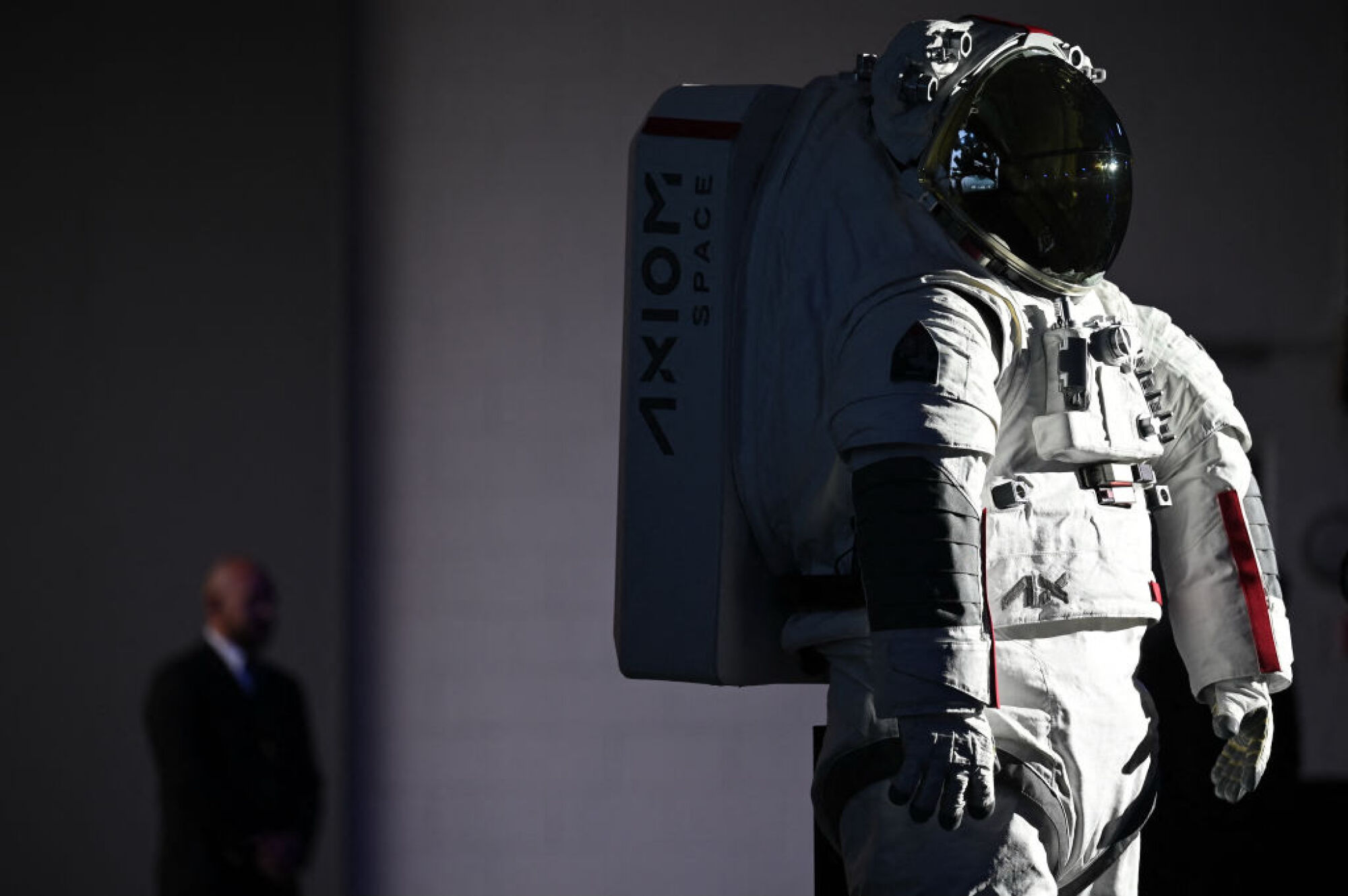
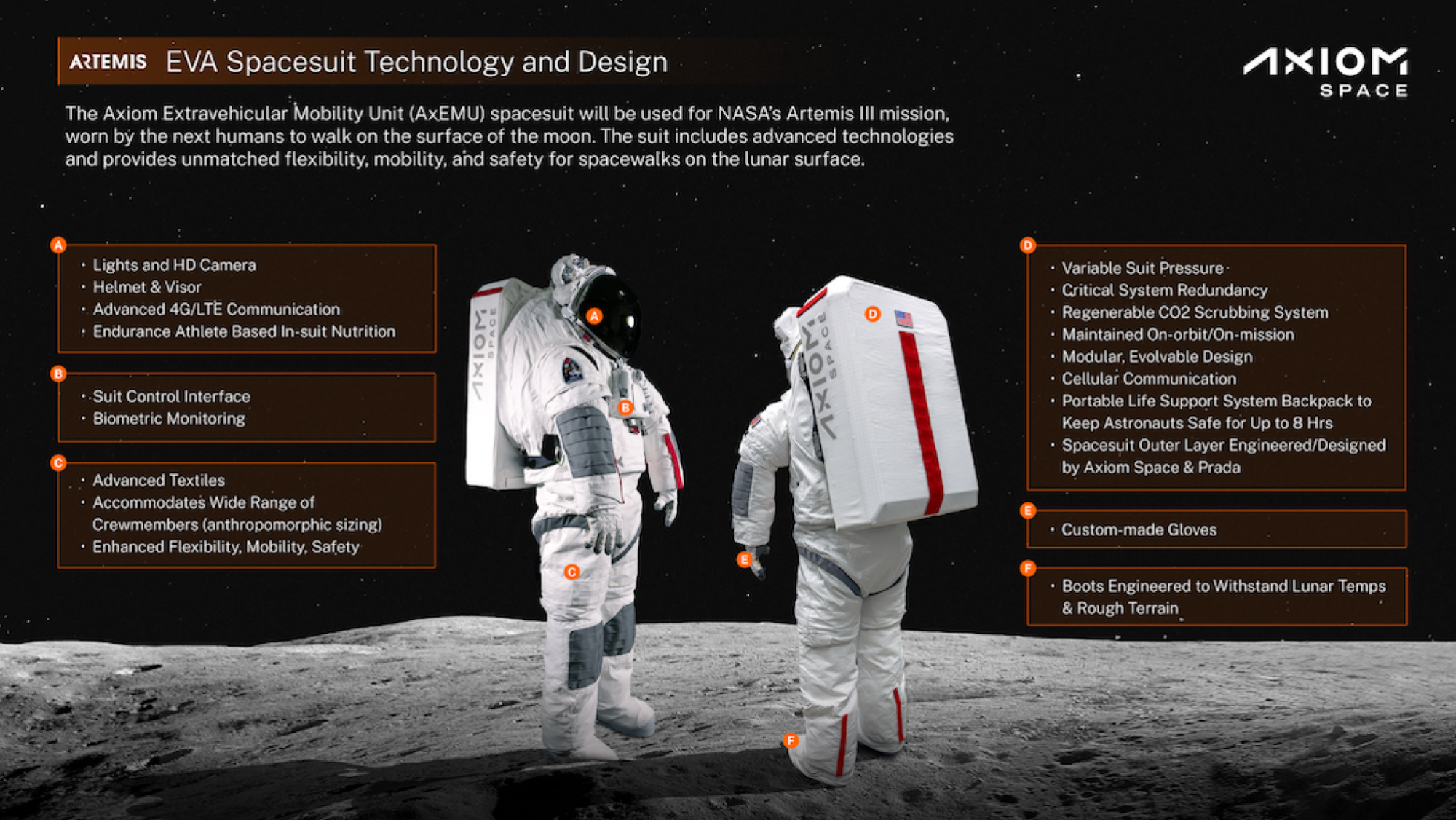

The new spacesuit is still in its final developmental stages, Axiom said, but it has already undergone some important tests. "Testing was conducted underwater to simulate the lunar environment with an unoccupied spacesuit at NASA’s Neutral Buoyancy Laboratory (NBL) and reduced gravity simulations at NASA’s Johnson Space Center," the company noted. On the moon, the suits must also contend with 130 F temperatures on crater rims, and "razor-sharp" lunar dust.
This is a major NASA project. The space agency awarded Axiom (it has since subcontracted with design experts Prada) a $1.26 billion contract, of which $228 million has been provided for the initial design and development. But the cost is still a relative pittance compared to the financial burden of the greater Artemis mission. The first four launches of NASA's new moon-bound megarocket — the Space Launch System — will cost $4.1 billion per launch, according to the agency's inspector general.
No one said the new space race, which intends to establish a permanent presence on the moon, would be cheap.
Topics NASA


